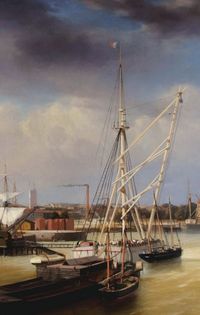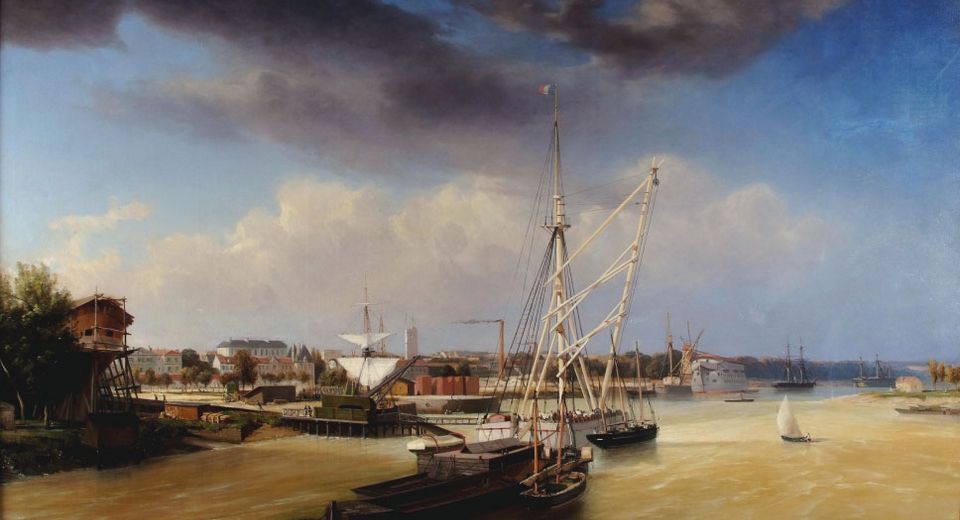View of the Port of Rochefort
Rochefort - Hôtel de Cheusses/Arsenal
Morel-Fatio’s “View of the Port of Rochefort” is a documentary source, showing the naval shipyard as an industrial site enjoying renewed activity under the Second Empire. The painting is also an allegorical vision of shipbuilding: the painter, who had been at sea himself and taken part in a good many expeditions, has provided a nostalgic image of the wooden sailing ships that he was familiar with.
Morel-Fatio: curator at the Louvre’s Naval Museum and Official Painter to the Navy
In parallel with his career as curator at the Louvre’s Naval Museum (the National Maritime Museum’s forerunner), Antoine Léon Morel-Fatio (1810-1871) devoted himself to painting. He was appointed Official Painter to the Navy in 1853. Known for the documentary value of his works, he received numerous commissions.
The Rochefort shipyard: an industrial site
 Enlarge image : Vue du Port de Rochefort
Enlarge image : Vue du Port de Rochefort
His “View of the Port of Rochefort”, painted circa 1865-1870, bears apt witness to the industrial site that Rochefort’s shipyard became under the Second Empire, a particularly eventful period in the French Navy’s history.
Setting up his easel on the left bank of the Charente, Morel-Fatio had a vantage point of the shipyard, its infrastructures and the machinery required for shipbuilding operations. His treatment of the Charente, which occupies the work’s foreground, evidences its siltation and suggests the role that Rochefort played in adapting to its natural environment and innovating in order to overcome such constraints.
Various of the city’s emblematic features occupy the background, including the Naval Commissariat, which now houses the Rochefort Museum’s collections, and the Porte du Soleil gate marking the entrance to the shipyard. The dry docks, signal station and dredging mill are also depicted.
A nostalgic vision of shipbuilding
The masting machine, which was used to install the lows parts of its masts once a ship was floated, figures prominently in the composition. However, at the time the work was painted, it was obsolete as the Navy was already building steamships.
On the left of the painting, a ship whose construction seems to be on hold, also suggest the end of a navy composed of wooden sailing ships, to be replaced by a fleet made up of metal steamships.
Collection highlight
The essential works to see during your visit to the Musée national de la Marine in Brest, Port-Louis, Rochefort, Toulon, and soon in Paris.

